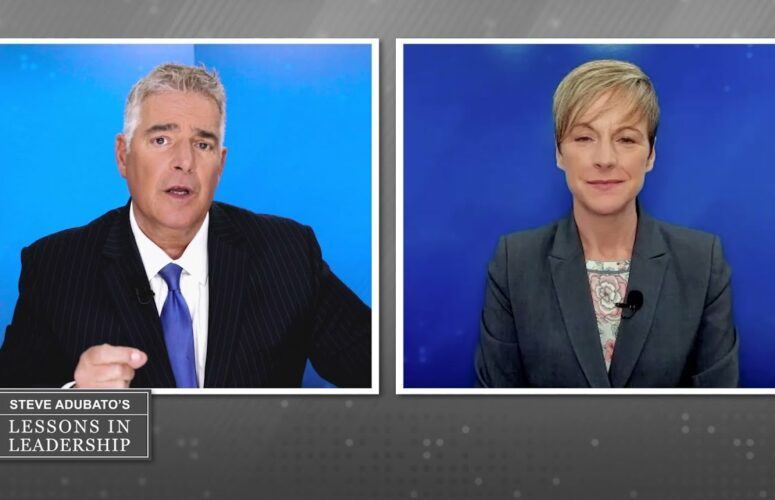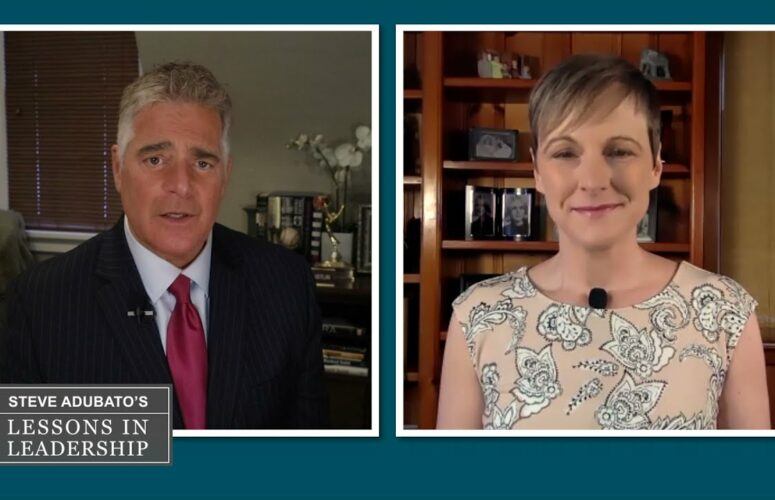Lessons in Leadership: Communicating “Bad News”
By Steve Adubato, PhD On Feb 22, 2024Steve Adubato and Mary Gamba talk with Ruchin Kansal, Professor of Practice, Seton Hall University, about Artificial Intelligence (AI) in leadership and how AI can help leaders improve their effectiveness and efficiency. Then, Steve and Mary are joined by Satyen Raja, CEO & Founder, WarriorSage Trainings, about Transcendent Leadership and how it can completely shift an organization’s culture.
One of a leader’s toughest jobs is to communicate a message that people don’t want to hear. When something goes wrong, any responsible leader must clearly communicate the nature of the problem and propose a concrete plan to address it. This is true whether you are a CEO, department manager or a school principal. Your job is still to tell a skeptical audience the “bad news” that things must change and that with this change may come some discomfort and sacrifice.
Simply put, sometimes a leader must take on the really tough challenges. It is easy being a leader in good times, when sales are up, and the organization is expanding by hiring new employees and branching into new territories. Yet, the true test of a leader is how he or she handles adversity. Regardless of the circumstance, here are some leadership and communication tips and tools for any leader who must share information that an audience would rather not hear.
- State the problem using clear, unambiguous language. For example, “We are nearly bankrupt and if we don’t do something about it immediately, the pain is only going to get worse.” Avoid using language like; “I think this is a serious situation that we should probably address in the near future.” Such qualifiers as “I think” and “probably” communicate doubt on your part and often result in confusion in the minds of those on the receiving end. Simply put, be thoughtful and intentional in the words you are using when communicating difficult information.
- Go into detail about the problem, without inundating your audience. When faced with a difficult situation, the best leaders ask themselves how much information is too much. We need to consider the reality that at some point if we communicate too much detail, we lose the ability to engage our audience in a spirited conversation. Further, if we share too much information without a clear message, the receiver is unclear of what is most important. Alternatively, if we don’t share enough detail when a problem occurs, it will leave your audience with unanswered questions and speculation. It is a delicate balancing act for sure.
- Have an open-door policy. Once you communicate your plan of action, it is essential to be totally accessible and open when selling it. Remember, people are uncomfortable with what you are telling them and one thing that could make them feel any better is knowing that they have a direct line of communication with you. Too many CEOs and organizational leaders attempt to shield themselves from tough questions and challenging situations. That’s why open and unscripted forums with employees and key shareholders are so productive.
- Create a sense of urgency without panic. Telling people, “We have a serious problem, and this is how we are going to get out of it” is one thing; but communicating that the sky is falling and there is nothing we can do to stop it is another. There is a fine line between communicating urgency and panic and the great leaders know how to walk it.
- Be firm but flexible. A leader should communicate his or her plan with conviction and passion while still being open to recommendations and revisions. When challenged, great leaders say things like; “That’s an excellent idea that I hadn’t considered. It’s something we should try to incorporate into our plan.” That doesn’t make you weaker; in fact it makes you stronger by showing you are confident enough to listen and admit you don’t have all the answers.






